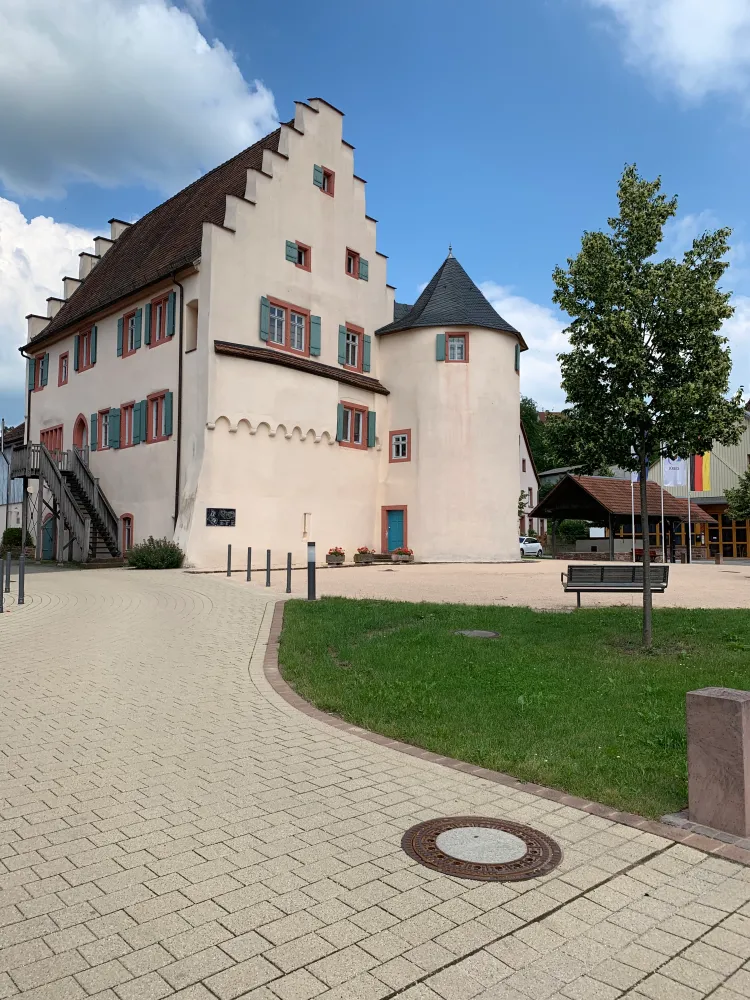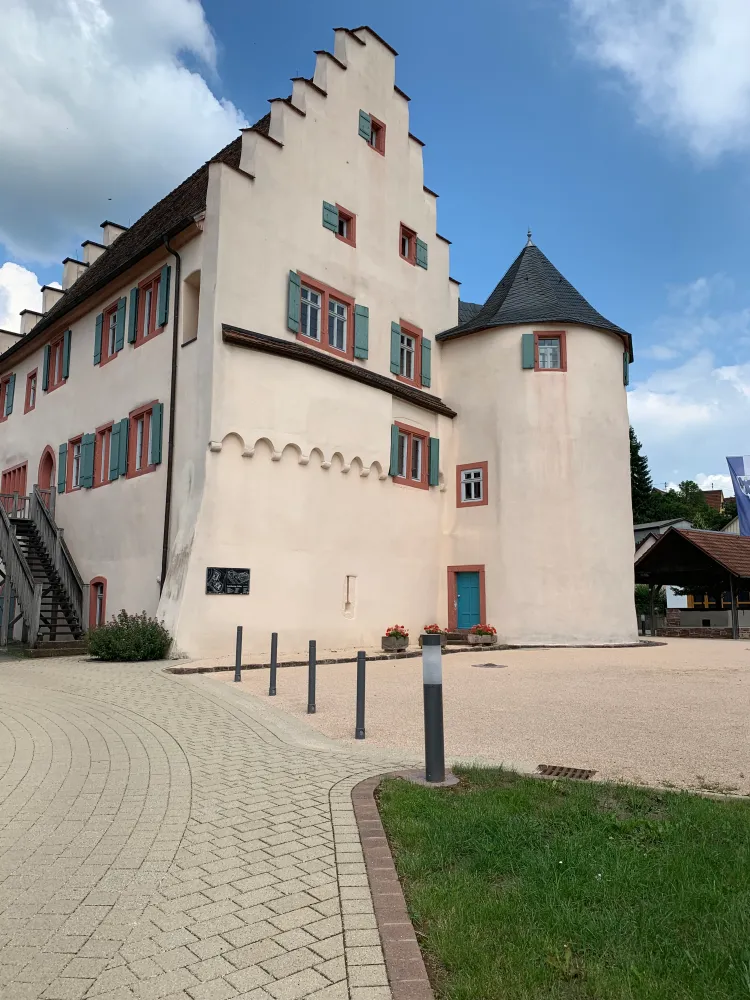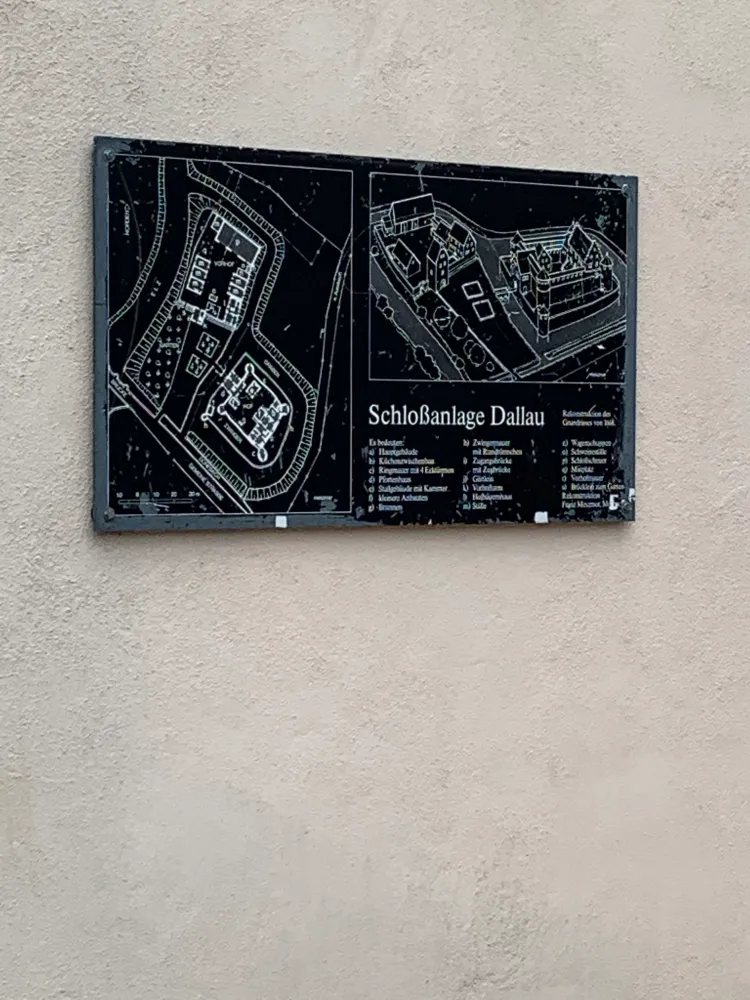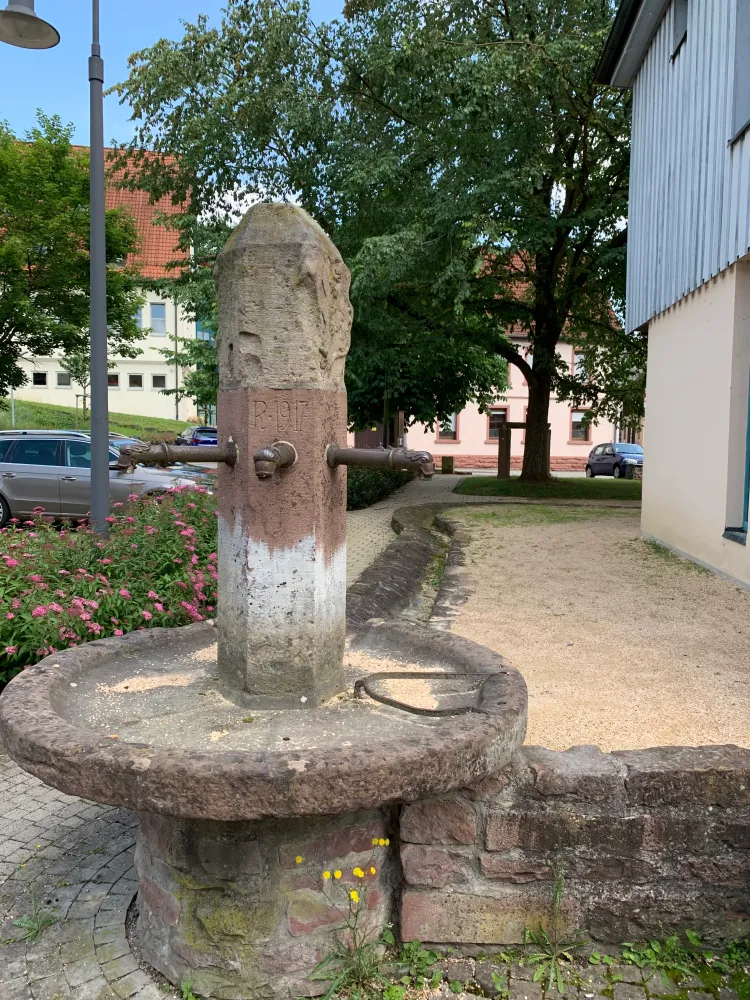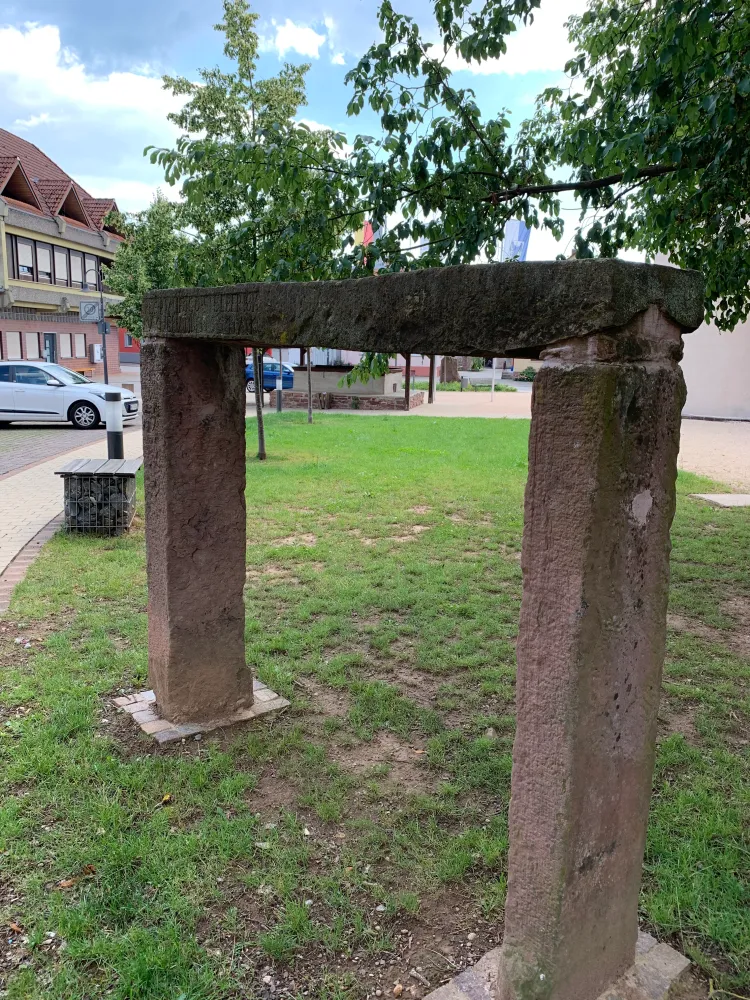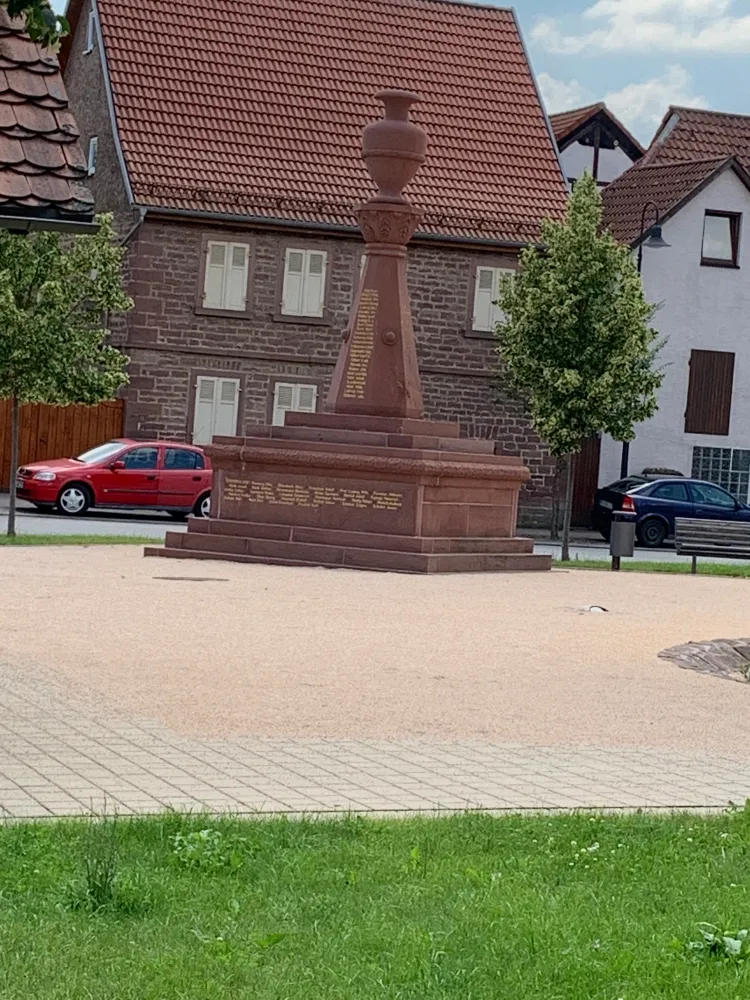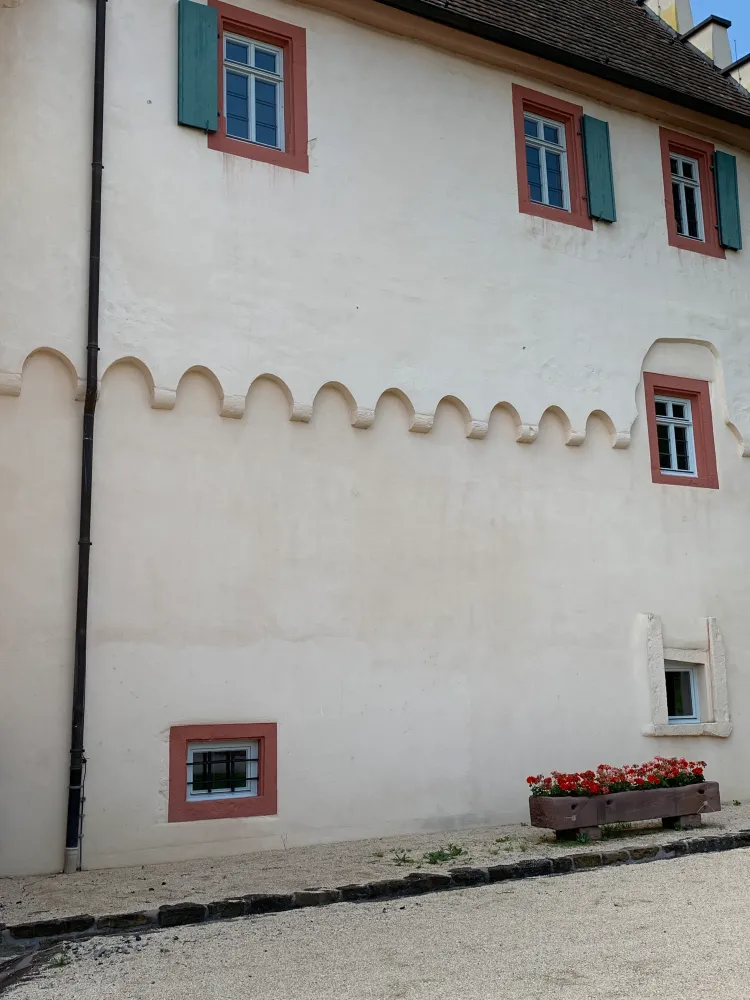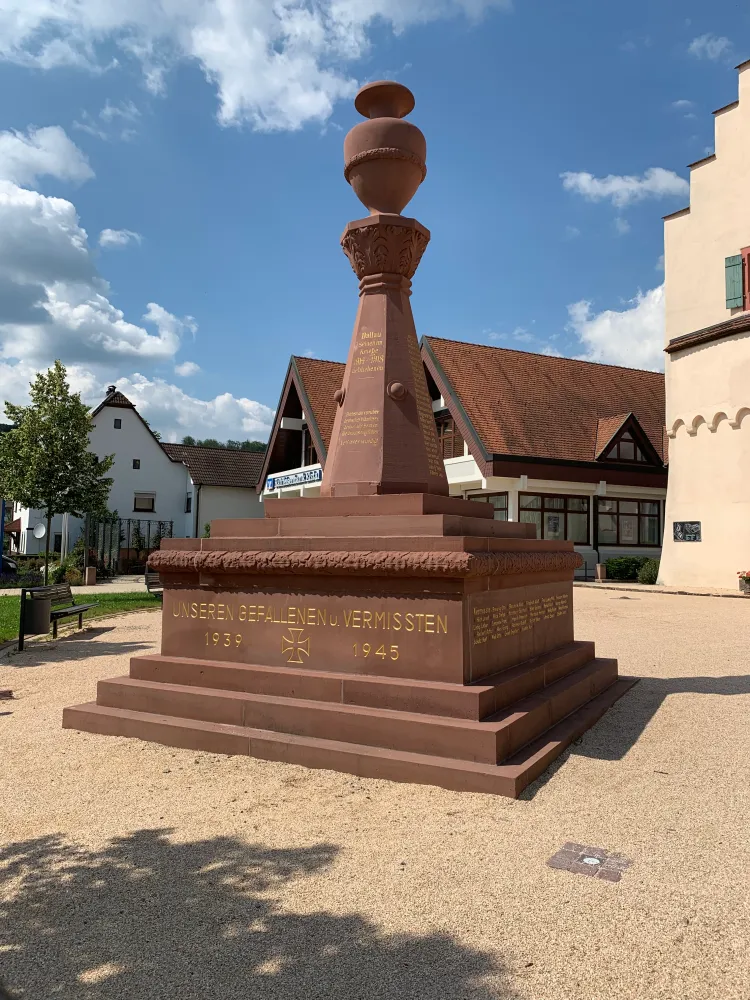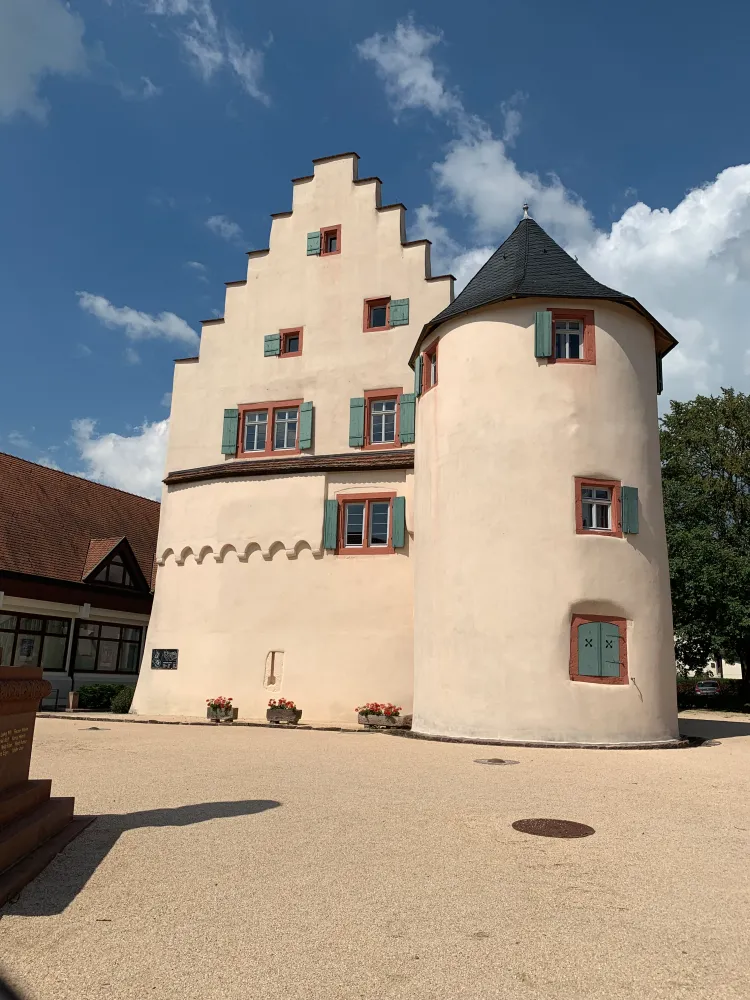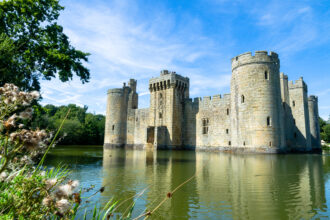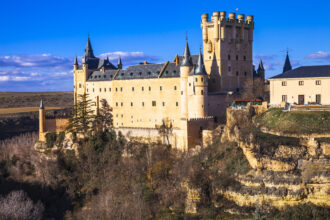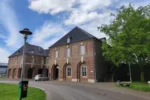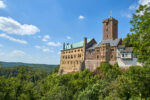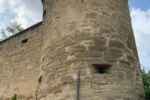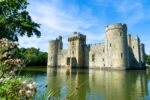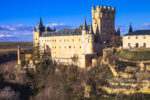During my tour, I discovered the former moated castle in Dallau, a district of the municipality of Elztal in the Neckar-Odenwald district. The castle was built around 1300 as a deep castle and was the seat of the then lords of Dallau, the Lords of Heinriet. The castle consisted only of a residential tower surrounded by a ring wall. In 1356, the castle was destroyed by the Archbishop of Mainz. It was not until 1371 that a rectangular building was erected on parts of the demolished tower castle and incorporated into the remaining ring wall. In 1416, the Teutonic Order bought half of the village and the entire castle. The Teutonic Order had the castle fundamentally expanded between 1438 and 1451. The old residential tower was replaced by the current palace with a stepped gable, which was built on the old ring wall to the south and west. The new main building, surrounded by a 20-meter-wide moat, partially double-walled and equipped with four corner towers and a gatehouse, formed the great hall. Beyond the moat to the west, the castle complex was adjoined by an outer bailey, also walled and accessible from the village only through a gate tower, with various farm buildings. Although the castle was captured by rebels during the Peasants’ War in 1525, it suffered only minor damage. In 1529 and 1530, the castle was expanded again, resulting in a multi-story kitchen extension on the north gable of the great hall. The entire complex was surrounded by a moat filled with water, transforming the castle into a small moated castle. In 1668, the complex came into the possession of the Electoral Palatinate and was abandoned in the course of the 18th century. Many parts of the building were demolished. After the municipality of Elztal acquired the castle in 1974, it was included in the monument utilization program in 1986. With its financial resources, it became possible to renovate and preserve this impressive medieval castle. The renovation took over four years. In July 1995, the castle was inaugurated and put to cultural use. Today, the second floor houses a branch of the music school, and the first floor is used for events and civil weddings. Today, Dallau Castle serves primarily cultural purposes. I parked my car and walked around the idyllic castle. Next to a memorial in front of the castle for those who fell in World War II, I discovered a mysterious stone. At first, I didn’t know what significance the stone had for the people of that time. An information board next to the stone enlightened me. The Ruhestein is a witness to a bygone era: the time before industrialization. Dallau at that time was dominated by agriculture. With over 1,700 hectares of land, it was one of the largest villages in the area. The distances that people and animals had to travel to reach the fertile fields of the plateau were correspondingly long. Many kilometers on steep dirt roads with up to 150 meters of elevation gain on foot and by horse-drawn cart. The farming families therefore often stayed in the fields from early in the morning until late in the evening. The women laboriously balanced food and drink in large baskets as they made their way up the hill. They were supposed to be able to rest halfway up. That is why the then bailiff Andreas Silber erected this resting stone in 1816 near today’s quarry in the “Trieb” field. After motorization, the stone lost its significance. It fell into oblivion and weathered away. Gustav Reichert saved the resting stone from decay in 1937. After land consolidation and reorganization of the road network, the stone was removed from its former location. Today, the resting stone has found a worthy place at the Dallau moated castle. It is intended to remind us of times past and radiate tranquility. This is as necessary today as it was then. I had never heard of it before and was surprised that such a stone existed in the past. You never stop learning. I took away many impressions of this historic building, which fortunately has been preserved. As I got into my car, the words of Russian-American writer Isaac Asimov came to mind: “The real pleasure is not in knowing, but in finding out!”
